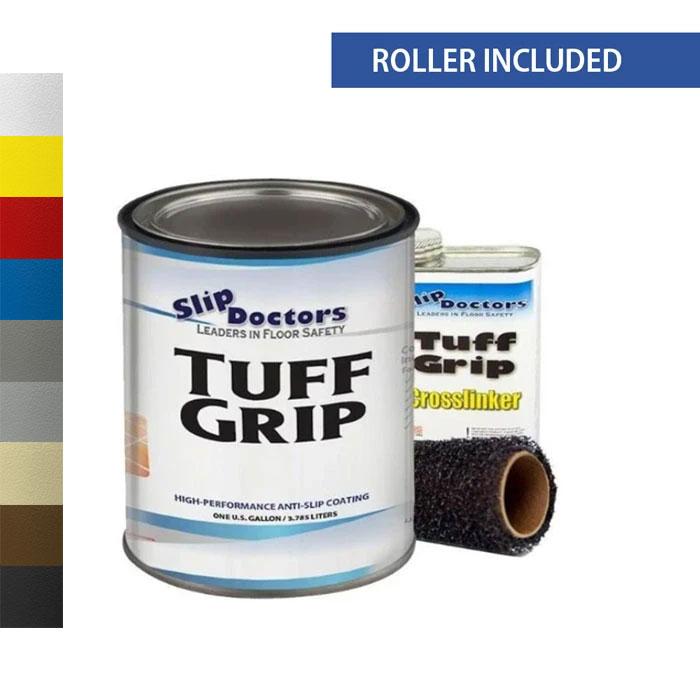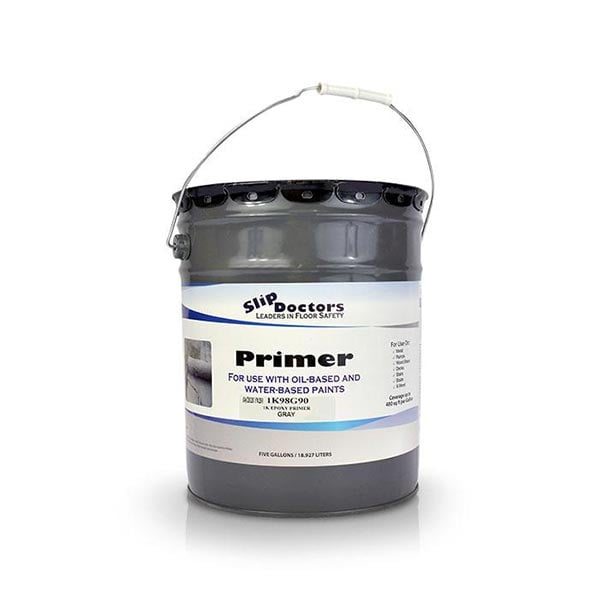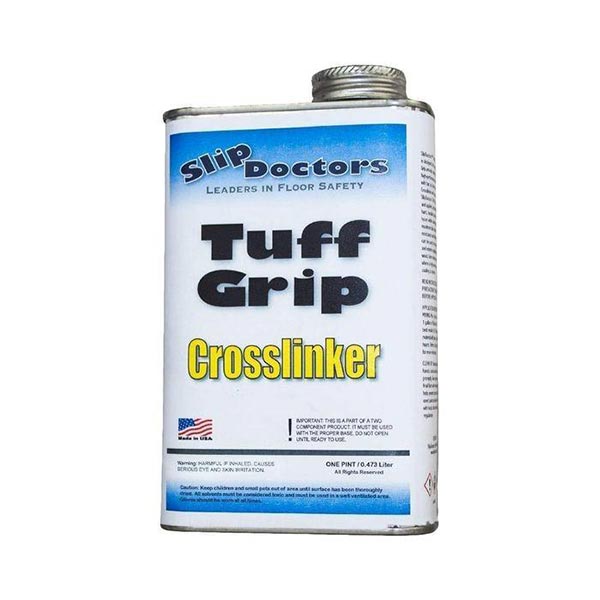Customized Stop-the-Slip Solutions
For Your Unique Conditions
Problem Area: Slippery Outdoor Synthetic Wood Stairs
Your Stop-the-Slip Solutions Graded:
Handi-Treads: A-
Handi-Treads are the most effective, long-lasting solution for minimizing the risk of slips and falls on exterior synthetic wood stairs. The raised traction buttons of the aluminum tread are uniquely self-cleaning as the pressure applied by a step pushes away the layer of moisture, frost or up to an inch of snow. The result is safe, solid contact between the tread and sneaker, shoe or boot.
Installation of the aluminum Handi-Treads is very simple. In contrast to the multi-task effort required to install traction tape or grit paint, there’s no need for time-consuming surface preparation prior to installation. Once installed, no maintenance is required for Handi-Treads which are guaranteed to last a lifetime.
If you live in an area where it snows, you’ll find that you can use a snow shovel on your Handi-Treads without fear of damage to the synthetic treads. This is not the case with most other solutions.
Handi-Treads are warranted for life in residential applications. creating a once-and-done installation. When calculated over a three to five year performance period, the investment in Handi-Treads is often the most-cost effective solution.



Total Score: A-
Effectiveness: A
Installation & Maintenance: A
Durability: A
Initial Price: C
Long-Term Value: A
Non-Slip Grit Tape: D
In a limited number of outdoor situations, non-slip grip tape can be a short-term solution to reduce slips and falls on synthetic wood stairs. Rain and frost are easily dealt with by grit embedded into the tape. However, once it snows the trouble really begins. You simply can’t use a snow shovel on grit tape. Not only will you pull the tape right off the stairs if you catch an edge, but even a plastic blade will quickly defeat the thin coating protecting the aggregate.
The proper installation of Non-Slip Grip Tape does require a bit of effort as detailed here. It’s important that the synthetic wood surface is clean and dry. Heavily grained synthetic wood can make it difficult for the tape adhesive to format a complete bond.
There’s no maintenance that can or should be done to the tape other than to be very careful of the edges and corners, which can be easily pulled up. Once a corner or edge begins to peel, the grip tape will quickly deteriorate.
If you’re comfortable with a lifespan on outdoor wood steps of six months to a year, grit tape can be an inexpensive temporary solution.

Total Score: D
Effectiveness: D
Installation & Maintenance: C
Durability: F
Initial Price: A
Long-Term Value: D
Rubber or Door Mat Style Treads: C
Door mat style and rubber treads are two of the most common solutions to slippery outdoor steps. The rubber treads often have a texture or design that offers very good grip when moisture or light frost exists. Door mat style treads are good at improving grip when wet, but their effectiveness varies based on the material used and the aggressiveness of their texture. They are also less effective with leather-soled shoes.
Both rubber and door mat style treads are effective in winter weather only if they are kept free of snow. Care must be taken when using a snow shovel with rubber treads as even a plastic blade can cut the rubber. Snow can be removed from door mat style treads with a shovel fairly easily as long as care is taken not to lodge the shovel under the edge of the tread.
Installation and maintenance of rubber and door mat style treads is a mixed bag on steps made of synthetic wood. Some of the products suggest just placing the “anti-slip” treads on the stairs without any screws or glue permanently attaching the treads to the steps. We think this is a poor idea as the rubber treads might actually become a hazard themselves, if you were to catch a toe.
We can only recommend rubber or door mat style treads if you permanently affix them to your stairs with screws or adhesive. Assuming you choose either of these methods you’ll find that the installation can have its share of difficulties. Both of these types of treads are maintenance free, but they do wear down with use. Depending upon thickness and quality of the material you can expect rubber or door mat style treads to last 2 to 5 years.


Total Score: C
Effectiveness: C
Installation & Maintenance: C
Durability: C
Initial Price: B
Long-Term Value: C
Grit Paint: B
A high quality grit paint, like Slip Doctor’s Dura Grip and Tuff Grip epoxy paint, can improve the safety of outdoor synthetic wood stairs, but using it will totally mask the uniform aesthetics of synthetic wood, which is one of the reasons you pay a premium for the artificial construction product.
Assuming grit paint will adhere to your specific type of synthetic wood, (and most Big Box Store grit paints won’t) it’s important that the paint is applied meticulously and is maintained properly. Like grit tape, non-slip paints include an aggregate that creates traction. The best anti-slip paints contain aluminum oxide or carborundum that, while encapsulated in the paint, create a rough, slip resistant surface. We rate the effectiveness of grip paint very high for wet weather, frost, and a dusting of snow.
Anti-slip paint used on synthetic wood steps is, by and large, maintenance free. However, if you live where it snows you need to be very careful not to aggressively shovel the stairs painted with grit paint. While the epoxy coating is durable under normal foot traffic, it’s no match for an aluminum snow shovel. Once you start to scrape way the thin paint layer covering the aggregate, the system can degrade.
The cost of a high-quality grit paint can run between $120 and $160 a gallon. In addition, you’ve got the consumable cost of paint brushes or rollers, trays, sandpaper, masking tape, and drop cloths. When all costs are factored, and depending upon the number of stairs, grit paint can be an effective solution.











